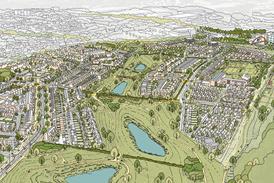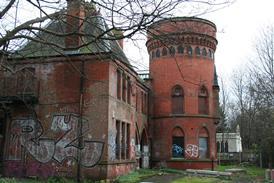We need to start using the term ‘sustainable’ in a more sustainable way, writes Anna Beckett

On a rainy evening last week, I found myself watching Interior Design Masters - the interior design equivalent of the Great British Bake Off. As I settled down with a cup of tea, the brief for the task was set out as “sustainability”. Fantastic. But as I perhaps should have expected, very little sustainable design took place.
Some contestants used timber, including some re-used panels, but that was pretty much it. One contestant actually made a concrete table. Another cut an oval shaped tabletop from the centre of a sheet of ply, effectively scrapping the rest.
Whilst it’s maybe a little ambitious to expect amateur designers to produce highly sustainable designs, it was disappointing that this aspect of their brief seemed to be largely ignored. I had expected at least one to produce a spectacular table from a discarded pallet given the number of those on Instagram.
But what was even more disappointing was that the lack of sustainable design, despite it being part of the brief, wasn’t addressed by the presenter and there was no description for the viewer of what a sustainable design might have looked like. Whilst clearly not an educational programme, it was an opportunity to promote sustainable design that was completely lost. And worse than that, the viewer may have come away thinking that what they had seen was sustainable.
Sustainability has become something that we can sell
The idea of “sustainable design” is slowly creeping into every aspect of our lives, and while this increased visibility is great it’s important that we use the description responsibly. As professionals our comments and opinions carry a certain amount of weight but just because you’re describing something as sustainable, it doesn’t mean that it is. Sustainability has become something that we can sell, but we need to be careful not to manipulate the data to tell the story that we need.
Its also important to remember that sustainable and low carbon are not the same thing. Just because something is low carbon you can’t continue to use it forever and expect what you are doing to be sustainable. I recently read about a company that had produced net-zero carbon trainers, or so they claimed, and unlike many other brands, they made quite a lot of effort to show their working. Unfortunately, they had relied on the sequestered carbon in the materials to offset the carbon involved during production.
Theoretically this makes sense, but sequestering is really just a way of storing carbon for a period of time. So, at the end of its life, that carbon is released back into the atmosphere and in a product with a relatively short lifespan, such as a trainer, that period isn’t very long. Wouldn’t it be better to find ways to ensure that the trainers we make now can be repaired and can at least be recycled at the end of their life?
In the construction industry steel production is a great example of this. Across the steel industry huge efforts have been made to reduce the embodied carbon of steel, which is obviously great, but the energy involved in steel production is still massive. Lower embodied carbon steel is still not sustainable but other advances in the steel industry such as steel reuse might be.
What we really need is a little more sustainable use of the word sustainability
When it comes to concrete this is perhaps even more evident. Cement replacement products can reduce the embodied carbon of your concrete but most of these are waste products from other industries, making them a finite resource. Plus, even if you use them, concrete is still a high embodied carbon material. Its better than it could have been, but it’s definitely not sustainable.
The definition of sustainability that I was taught was,“meeting the needs of the present without compromising the ability of future generations to meet their own needs,” a definition produced by the UN in 1987. More recent definitions describe sustainability as “the long-term maintenance and enhancement of human well-being within finite planetary resources.”
Whether the net-zero carbon trainers and the Interior Design Masters count as enhancing human well-being is open for debate, but I’m not sure either of them is the best use of finite resources. And perhaps that’s the way we need to approach our projects from the outset.
I’m sure we can all find a way to tell a sustainability story about the decisions that we’ve made, but are we making the best use of finite resources? Did we really need everything to be new? Could we have made the building work a bit harder? What we really need is a little more sustainable use of the word sustainability.
Postscript
Anna Beckett is an associate at Buro Happold
















1 Readers' comment